Summer is just around the corner. Back to hot nights and even hotter days. It’s so warm you can’t even breathe right. You start shopping for cooling pillows and trying to evaluate your finances to see if you could really afford a home cooling system You don’t have to suffer, or spends thousands of dollars on such a system. As an immediate solution, start with an affordable ceiling fan!
These multi-bladed wonders ensure you won’t be forced to change your shirt for the second or third time of the day with their improved circulation technology. With lightweight angled construction and a powerful, variable-speed motor take back the thermal control and make your environment work for you. Depending on the size of your room, take charge and get something that will cool everyone everywhere therein. Get one (or more) for your offices, home or anywhere else that is subject to the ravages of the harsh sun.
We have gone through scores of fans out there, and so we can confidently present to you the ten best ceiling fans out there.
Top 10 Ceiling Fans Of 2020 Reviewed
1. Hunter Builder Deluxe 5-Blade Single Light Ceiling Fan
 Ceiling Fan For High Ceiling
Ceiling Fan For High Ceiling
This 5-blade ceiling fan from Hunter has a diameter of 52 inches, reversible blades (Brazilian cherry on one side with stained oak on the other), a reversible motor, two 60W Candelabra Incandescent bulbs, a pull chain, and a bowl light kit with Toffee glass. You can install it with or without the light kit.
Take note, the light is pretty dim and can’t be used as the sole source of light in a room. The fan is beautiful and can easily fit into most decor. It’s pretty quiet even at its highest speed so it can be installed in the bedroom. You get three mounting options – standard method, flush, and angled. Installation is also pretty straightforward.
However, the glass bowl is very fragile. Some users have reported cracking it during installation. Also, it would be better if there was a remote control to go with it.
Pros:
- Three mounting options
- Reversible motor
- Beautiful fan
Cons:
- Dim light
- Fragile glass dome; cracks easily
- Does not include remote control
2. Westinghouse Comet Reversible Indoor Ceiling Fan
 Ceiling Fan For Large Room
Ceiling Fan For Large Room
For less than $100, you can get this 52-inch reversible five-blade ceiling fan which can cool a room that’s 360 square feet. Compared to some of the fans you’ll see in the market today, this one is very simple. It features a 153-millimeter by 15-millimeter cold-rolled steel motor with a triple capacitor which is reversible so you can use this all year long.
It does feature a pull chain for the fan (three speeds) and the light (on/off). The airflow is up to 5,199 cubic feet per minute and it is rated to operate at 61 watts without lights. In short, it cools you off when you need it and does so silently. And if by chance it breaks down, Westinghouse backs this product with a lifetime motor warranty and a two-year warranty on all other parts.
However, the light part of the fan could use an upgrade. It’s pretty dim. Also, some users have found it difficult to install.
Pros:
- Reversible motor
- Affordable price
- Lifetime motor warranty
Cons:
- Difficult to install
- Dim lighting
- May wobble a bit
3. Minka-Aire F518L-WH
 Ceiling Fan For Low Ceiling
Ceiling Fan For Low Ceiling
The Minka-Aire F518L-WH is a high-end flush mount ceiling fan that is 44 inches with a 153 x 15mm motor size and 3 blades at a 14-inch pitch. It has a contemporary design and comes in a variety of colors including white, brushed nickel, and oil-rubbed bronze. The airflow is 2,629 cubic feet per minute with an estimated yearly energy cost of $8. It is remote control operated and has an integrated LED downlight, white opal glass, and a cap for non-light use. Now, the light isn’t bright but it isn’t too dim either.
The installation is quick and easy. And the fan is very quiet even at the highest speed. As an added bonus, the remote control allows you to reverse the direction of the fan without having to touch the motor. The problem is the “whirring” noise that the blades make when the wind passes through it.
Pros:
- Looks good
- Easy to install
- Comes with a remote control
Cons:
- Very expensive
- Whirring sound
- Not for large rooms
4. Westinghouse Harmony Indoor Ceiling Fan
 Ceiling Fan For Bedroom
Ceiling Fan For Bedroom
This ceiling fan from Westinghouse isn’t just about making you feel cool, it’s also about making your house look cool. First of all, it features two weathered maple blades that have a modern twist, a brushed nickel finish, and an integrated opal frosted glass light fixture. This fan can cool a 144-square foot room with its airflow at 4881 cubic feet per minute. it has a reversible 153-by-20-millimeter silicon steel motor with triple capacitor and 4 fan speeds.
Like all Westinghouse ceiling fans, this comes with a lifetime warranty on the motor and a two-year warranty on all other parts. Aside from being stylish, this fan is super quiet and quite powerful despite having only two blades. However, it does not come with a remote and the lights aren’t all that bright. Plus, some users have reported hearing a clicking sound that can easily be remedied by putting electrical tape on the metal base and fan insert.
Pros:
- Powerful; good airflow
- Beautiful design
- Easy to install
Cons:
- No remote
- Dim lights
- Some users report a clicking sound
5. Emerson Ceiling Fans CF144WW
 Ceiling Fan For Outdoors
Ceiling Fan For Outdoors
The Emerson Curva Sky is an indoor and outdoor ceiling fan. This 44-inch fan features 3 weather-resistant blades, an integrated light fixture, a removable ‘no-light’ plate, and includes a 6-speed remote control with the receiver. The airflow is 3830 cubic feet per minute and it can easily cool a room that’s up to 144 square feet in size. Its compact design makes it perfect for low-ceiling rooms. The fan comes in three colors – oil rubbed bronze, appliance white, and brushed steel (not for outdoor use).
While the fan is powerful and quiet, there are some things we don’t like. The installation isn’t the easiest we’ve come across and the remote control is kinda finicky. Also, like in most ceiling fans, the lights are dim and can’t be used as the only light source in the room.
Pros:
- Powerful
- Low profile
- Very quiet
Cons:
- Hard to install
- The remote control is finicky
- Dim lights
6. Monte Carlo Discus
 Ceiling Fan For Outdoors
Ceiling Fan For Outdoors
If you have a large room that you want to cool off, this 52-inch ceiling fan from Monte Carlo should do the trick. It features a 153 X 18 mm torque-induction motor, 5 blades with a 12-inch pitch, and pull-chain controls. This fan is sold in matte black, white, roman bronze, brushed steel, and polished nickel.
It also comes with a balancing kit. The motor is pretty quiet considering this is a large and powerful fan. However, there’s no remote control. The light, as is in most cases, is not bright. Plus, these are not regular light bulbs – 75W E11 Halogen Bulbs – so you’ll need adapters to be able to switch them out with LED bulbs.
Pros:
- Quiet
- Very powerful
- Lots of color options
Cons:
- Dim lights
- Non-standard halogen bulbs
- No remote control
7. Westinghouse 7226520 Xavier
 Ceiling Fan For Lighting
Ceiling Fan For Lighting
This is a uniquely designed 44-inch ceiling fan from Westinghouse that will appeal to anyone who wants something functional and eye-catching. It features a 153-millimeter by 15-millimeter silicon steel motor with a triple capacitor, 5 reversible blades, a reversible switch, a 3/4-inch by 4-inch down rod, and three GU10 50-watt MR16 halogen bulbs. The blades themselves are unique as these are oval-shaped and reversible; one side has a Maple finish while the other has a Mahogany finish.
The fan can provide airflow of 4,381 cubic feet per minute for rooms up to 144 square feet. The three spotlights allow you to point them at specific directions such as when you want it to highlight artwork in the room. However, there is no remote control. Installation can be a bit tricky because the instructions aren’t straight forward. Also, several users have reported their fans breaking down within a year after purchase.
Pros:
- Beautiful design
- Quiet
- Bright lights
Cons:
- Hard to install
- No remote control
- Reports of breaking down after within a year of use
8. Haiku Home L Series 52″ Smart Ceiling Fan
 Ceiling Fan On The Market
Ceiling Fan On The Market
This Haiku ceiling fan is one of the most expensive fans in the market today. But if you’re a fan of smart technology, you just might think it’s worth it. The fan works with Amazon Alexa and is controlled by an IR remote that is included in your purchase. It can cover a room that is as large as 15×15 feet and is Energy Star certified (exceeds efficiency requirements by 450%).
It has an integrated LED with 16 distinct brightness settings. There’s even a mobile app that you can use to set and adjust your preferences. The fan comes factory-balanced and features an exclusive, sound-tested Axial Flux Permanent Magnet Motor. However, it is a bit hard to install. Most of the parts are made out of plastic which is disappointing considering the price. It’s powerful but not more powerful than cheaper fans in the market.
Pros:
- Compatible with Alexa
- 16 brightness levels
- IR remote control
Cons:
- Setup is tricky
- Lots of plastic parts
- Very expensive
9. Casa Vieja Casa Habitat Ceiling Fan
 Ceiling Fan For Outdoors
Ceiling Fan For Outdoors
The Casa Habitat flush mount ceiling fan has a compact design that’s perfect for small, low ceiling rooms. It features 5 blades, 153x15mm motor size, a frosted white glass light kit, an oil-rubbed bronze motor finish, and pull chains. The fan has a 44-inch blade span and a 14-degree blade pitch. The fan is fairly easy to install and is super quiet. In a small room, this can definitely keep you cool and it’s quite attractive to boot.
However, we found it weird that the pull chains are actually located at the center of the light. The light is dim but that’s too be expected from a ceiling fan. The installation is easy if you know what you’re doing. If not, the instructions are a bit vague.
Pros:
- Beautiful antique design
- Perfect for low ceilings
- Super quiet
Cons:
- Light is not that bright
- Vague instructions in the manual
- Pull chain runs through a hole in the center of the light
10. Emerson Modern Ceiling Fans Tilo Low Profile
 Ceiling Fan For Outdoors
Ceiling Fan For Outdoors
This small ceiling fan from Emerson has a unique minimalist design with curved plywood blades that provide airflow of 2278 cubic feet per minute. The Tilo can be installed close to the ceiling or using the standard download. It comes with a 4-speed sliding wall control so you don’t have to worry about any pull chains detracting from the fan’s aesthetic appearance. Unlike all of the other fans on our list, this one does not have a light fixture included though you can purchase it if you need it. While this is a small fan, it can move a great deal of air. It’s very quiet and doesn’t wobble even at the highest speed. However, it isn’t for large rooms. Also, other fans in this price range come with a light kit. This doesn’t.
Pros:
- Two mounting options
- Super quiet
- Powerful for a small fan
Cons:
- No lighting fixture
- Not for large rooms
- Some users prefer a pull chain to the sliding wall control
Choosing The Best Ceiling Fan – The Ultimate Buying Guide
The primary reason you’re buying a ceiling fan is to ensure the air in the room gets circulated. A good fan can keep you cool in the summer and warm in the winter. Sounds simple enough to look for, right?
However, if you’ve ever had the chance to walk around a home store or just browse through Amazon, you probably already know that there are numerous products in the market. It’s bound to be a tough choice. So, how do you find the one that suits your needs and style? Well, sometimes you might not have enough money to go with an entire cooling/heating home system; sometimes an industrial fan might not seem practical. Well, in our guide, we discuss the features you need to look out for before buying. Just keep reading below.
What Size Should You Choose?
Obviously, size matters when you buy a ceiling fan. The bigger the diameter of the fan, the more air it’s bound to produce. However, to be efficient, you can follow the recommendations made by ENERGY STAR® regarding size:
- Rooms up to 75 square feet = 29-36 inch
- Rooms 76-144 square feet = 36-42 inch
- Rooms 144-225 square feet = 44 inch
- Rooms 225-400 square feet = 50-54 inch
Rooms that are extra-large or have very high ceilings should consider a blade span ranging between 60 to 80 inches.
Keep in mind that if you want to ensure your ceiling fan is energy efficient, you’ll need to look beyond size. You need to look for the Energy Star seal which rates a product as such. One example is the Haiku Home L Series 52″ Smart Fan.
How high is your ceiling?
Not all ceiling fans can be mounted the same way. Ideally, the blades of your fan should be approximately 8 feet away from the floor. Rooms with low ceilings need a fan that can be mounted flush to the ceiling – no rod required – so that it keeps a low profile. High ceilings (more than 8 feet) can be installed with a downrod mount. The size of the downrod will depend on the ceiling height. Some fans such as the Hunter 53091 Builder Deluxe 5-Blade Single Light Ceiling Fan can be mounted on an angled ceiling.
Here’s a chart on the recommended downrod size based on ceiling height:
| Ceiling Height | Recommended Downrod Size |
| 9 feet | 6 inches |
| 10 feet | 12 inches |
| 12 feet | 24 inches |
| 14 feet | 36 inches |
| 16 feet | 48 inches |
| 18 feet | 60 inches |
| 20 feet | 72 inches |
What Should be the Design of the Fan and the Blades?
The look of a fan and its blades are more about aesthetic preferences than the utility. It’s the angle of the blades that will determine the fan’s ability to move air. It is recommended that the pitch should be between 12 and 14 degrees. The number of blades is also not as important as you think though. Most fans have 4-5 blades.
Ceiling fans also come in a variety of finishes. The most popular ones are oil-rubbed bronze, brushed nickel/steel, matte black, and white. The material of the blades also differ. Some blades are designed as reversible such as the ones found in the Westinghouse 7226520 Xavier.
Do You want Lights to go with Your Fan?
A great number of ceiling fans have light kits to go along with it. However, you need to keep in mind that most of these are not bright enough to be the only light source in a room. If you wish to change the bulbs that are included with the fan, make sure that you buy one that has bulbs that are easily switched.
Remote Control, Pull Chain, or Wall Control?
Think about how you want to be able to control your fan? Most have pull chains but you can buy a compatible remote control if you want the extra convenience. A sliding wall control is best if you’re the type of person who loses remote controls but you don’t want the visual distraction of a pull chain. Just keep in mind that a dimmer switch isn’t recommended for ceiling fans with lights as they tend to make the fan’s motor become noisy.
What’s CFM?
Cubic feet per minute or CFM is the measurement used for airflow. What it means, in very simple terms, is that the higher the airflow, the cooler your room will be. The amount of airflow produced by a fan will depend upon its size. A fan that is 41 inches or less should produce an airflow of 1499 to 4000+ CFM. A blade span of 42 inches to 49 inches should produce 1999 to 5000+ CFM. A blade span of 50 inches or larger should produce an airflow of 2999 to 6500+ CFM.
Conclusion
Whatever ceiling fan you end up choosing, make sure that installation isn’t going to be a problem for you. A lot of these fans are pretty easy to install. However, there are some that are slightly tricky and will require a bit of know-how, especially if the instructions are vague. If you aren’t sure about your skill, take into account the possible expense of hiring an electrician to do the work when it comes to considering your budget.


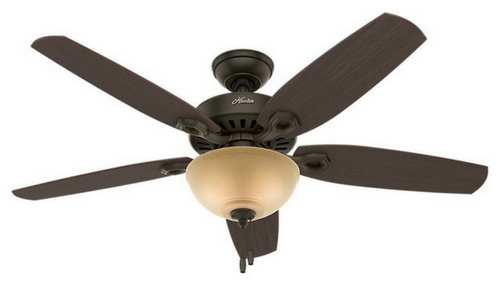
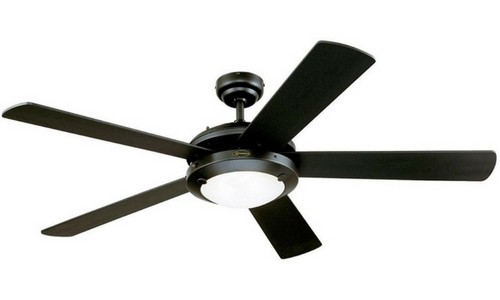
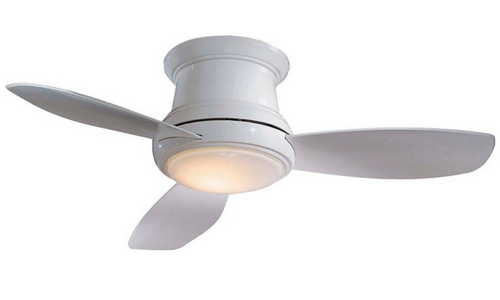
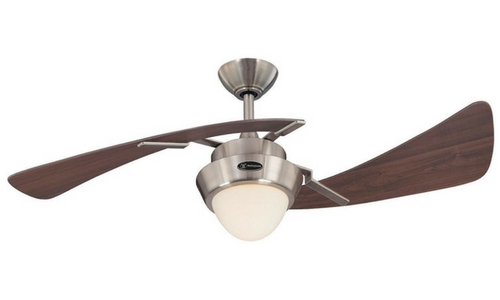
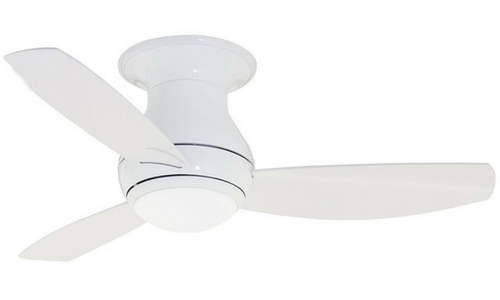
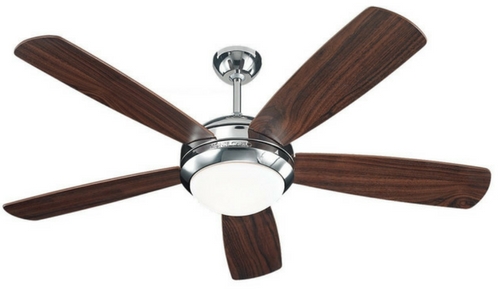
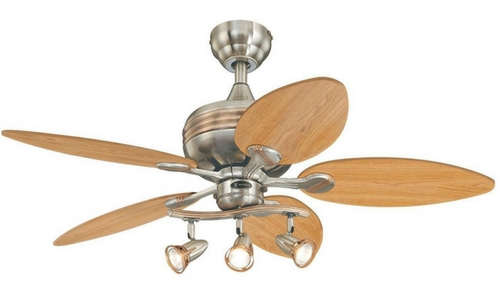
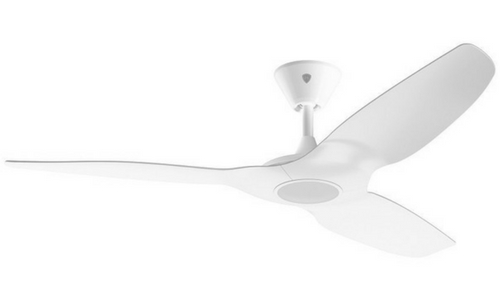
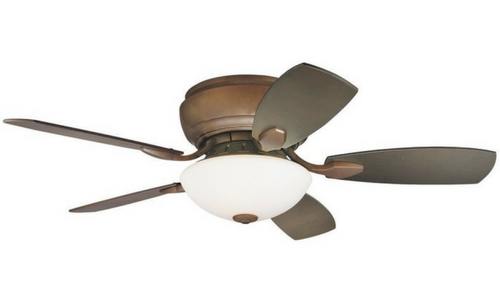
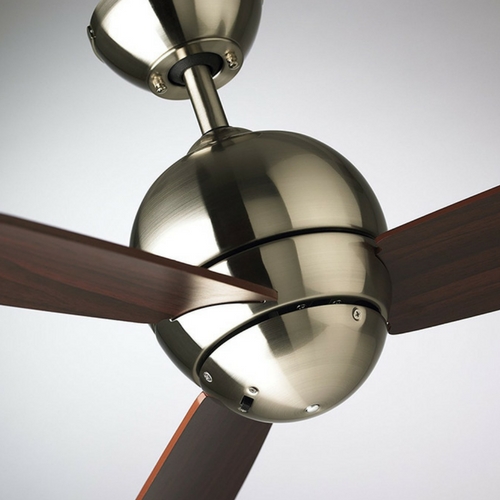
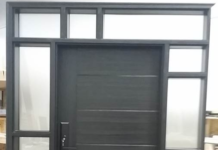










![Best Crochet Hooks for Beginners and Pros [2020 Update] best crochet books](https://www.awebtoknow.com/wp-content/uploads/2018/01/best-crochet-books-100x70.jpg)


![Best Juicers For Fruits and Vegetables [2020 Update] best juicers](https://www.awebtoknow.com/wp-content/uploads/2018/01/best-juicers-100x70.jpg)